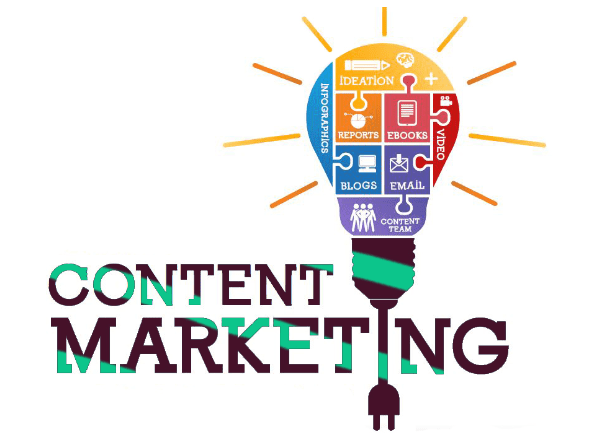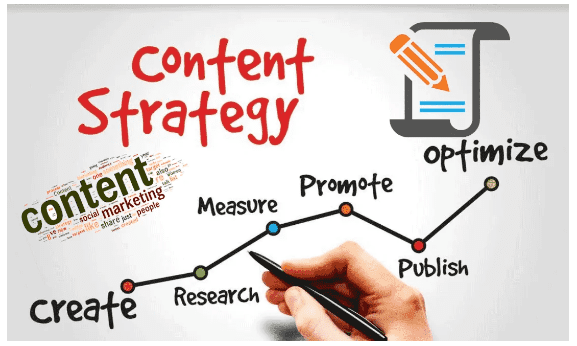Table of Contents
ToggleProduct marketing and content marketing are two important components of a successful marketing strategy, but they differ in their focus and objectives.
Product marketing focuses on promoting and selling a specific product or service to a target audience. This involves understanding the unique features and benefits of the product and creating targeted campaigns that highlight these benefits to the intended audience. Product marketers use various tactics such as advertising, sales promotions, and PR to generate interest and awareness of the product.
On the other hand, content marketing focuses on creating and distributing valuable, relevant, and consistent content to attract and engage a target audience. The aim of content marketing is to build trust and establish the brand as an authority in the industry. Content marketing includes tactics such as blogs, social media posts, e-books, and webinars.
While product marketing focuses on driving sales, content marketing aims to create brand awareness and build a loyal customer base. Both are important aspects of a marketing strategy, but they serve different purposes.
By understanding the differences between these two approaches, businesses can create a well-rounded marketing strategy that effectively promotes their products and builds their brand.
Introduction to Product Marketing and Content Marketing
Product marketing and content marketing are two important components of any successful marketing strategy. Both are designed to promote a business and its products, but they differ in their focus and approach.
Product marketing is focused on promoting and selling a specific product or service to a targeted audience. It involves understanding the unique features and benefits of the product and creating campaigns that highlight these benefits to the intended audience. Product marketers use various tactics such as advertising, sales promotions, and PR to generate interest and awareness of the product.
On the other hand, content marketing is focused on creating and distributing valuable, relevant, and consistent content to attract and engage a target audience. The aim of content marketing is to build trust and establish the brand as an authority in the industry. Content marketing includes tactics such as blogs, social media posts, e-books, and webinars.
The ultimate goal of both product marketing and content marketing is to drive sales and promote the brand. However, they approach this goal in different ways. Product marketing is focused on directly promoting a specific product or service, while content marketing aims to build trust and loyalty by providing valuable information and establishing the brand as an industry expert.
A well-rounded marketing strategy will include both product marketing and content marketing. By combining the two approaches, businesses can effectively promote their products, build their brand, and drive sales.
The benefits and challenges of using product marketing and content marketing in marketing and sales efforts
Product marketing and content marketing both have their benefits and challenges when it comes to using them in marketing and sales efforts.
One of the benefits of product marketing is that it is focused on promoting a specific product or service, which can lead to increased sales and revenue. It also allows for targeted messaging and more precise targeting of the intended audience. However, one of the challenges of product marketing is that it can be costly and time-consuming to create campaigns and materials that effectively promote the product.
Content marketing, on the other hand, provides several benefits. It can establish the brand as an authority in the industry, build trust with potential customers, and generate leads. Additionally, content marketing can be cost-effective, as it often relies on creating valuable content that can be repurposed across different channels. However, content marketing can also be time-consuming to produce and requires consistent effort to maintain a successful strategy.
The challenges of using both product marketing and content marketing include ensuring that the messaging is consistent across all channels, identifying the right audience, and measuring the effectiveness of the marketing efforts. However, when used together, they can provide a well-rounded approach that effectively promotes the brand, builds trust with potential customers, and drives sales.
The benefits of using product marketing and content marketing in marketing and sales efforts outweigh the challenges, and both should be considered as part of a comprehensive marketing strategy.

Key Differences between Product Marketing and Content Marketing
Product marketing and content marketing are two distinct approaches to promoting a business and its products. Understanding the key differences between the two can help businesses develop an effective marketing strategy that meets their specific goals.
- One of the key differences between product marketing and content marketing is the focus of the messaging. Product marketing is focused on promoting a specific product or service and its features, benefits, and value proposition to the target audience.
Content marketing, on the other hand, is focused on creating and sharing valuable, informative content that educates and engages the target audience, and establishes the brand as an authority in the industry. - Another difference is the format of the messaging. Product marketing relies on a range of tactics, such as advertising, sales promotions, and PR to promote the product, while content marketing relies primarily on creating and sharing valuable content through blogs, social media posts, videos, and other forms of content.
- The intended audience also differs between the two approaches. Product marketing is targeted towards potential customers who are already interested in the product or service and are more likely to convert to a sale. Content marketing is focused on a wider audience and aims to build awareness, trust, and loyalty with potential customers who may not be ready to make a purchase.
- Finally, the goals of each approach differ. Product marketing is primarily focused on driving sales and revenue, while content marketing is focused on building brand awareness, establishing the brand as an authority in the industry, and generating leads.
By understanding the key differences between product marketing and content marketing, businesses can develop a well-rounded marketing strategy that effectively promotes their products and builds their brand.
Purpose and objectives
The purpose and objectives of a marketing campaign depend on the specific goals and needs of the business. However, in general, the purpose of a marketing campaign is to promote a business, its products or services, and build brand awareness.
The objectives of a marketing campaign may include increasing sales, generating leads, building brand loyalty, establishing the business as an authority in the industry, and reaching a new target audience.
To achieve these objectives, a marketing campaign may use a variety of tactics, such as advertising, content marketing, email marketing, social media marketing, influencer marketing, and search engine optimization (SEO).
The ultimate goal of any marketing campaign is to create a positive perception of the brand in the minds of potential customers and motivate them to take action, such as making a purchase or sharing the business with others.
By setting clear objectives and carefully selecting tactics that align with those objectives, businesses can develop effective marketing campaigns that help them achieve their goals, reach new customers, and build their brand.
Audience and format
When developing a marketing campaign, it is essential to consider the intended audience and the most effective format for reaching that audience.
The audience for a marketing campaign may vary depending on the business and the specific product or service being promoted. For example, if the product is targeted towards a younger demographic, social media platforms such as Instagram or TikTok may be the most effective way to reach that audience. If the product is targeted towards a more professional audience, a business-focused platform like LinkedIn may be more effective.
The format of the marketing campaign should also align with the audience and the business’s goals. For example, if the goal is to increase brand awareness, a content marketing strategy that includes blog posts, social media posts, and videos may be the most effective format. If the goal is to generate leads or drive sales, an advertising campaign that includes targeted ads on search engines or social media may be more effective.
It is also important to consider the preferences of the intended audience when selecting the format. For example, if the target audience is more likely to consume content through video, then creating video content may be more effective than written content.
By considering the intended audience and selecting the most effective format, businesses can create marketing campaigns that effectively promote their products or services and reach the desired audience.

Content and structure
The content and structure of a marketing campaign are critical components that can significantly impact its effectiveness.
The content of the campaign should be carefully crafted to appeal to the intended audience and achieve the campaign’s goals. This may involve conducting market research to understand the needs, preferences, and pain points of the audience and tailoring the messaging to resonate with them. The content should be clear, concise, and compelling, with a focus on the benefits of the product or service and its unique selling points.
The structure of the campaign refers to the way the content is organized and presented. A well-structured campaign will have a clear and consistent messaging across all channels and tactics used. This means that the same tone, voice, and brand identity should be used across all campaign materials, including social media posts, advertisements, and landing pages.
The campaign structure should also include a clear call-to-action (CTA) that motivates the audience to take action, such as making a purchase, signing up for a newsletter, or contacting the business for more information. The CTA should be prominent and easy to find, and the steps to complete it should be straightforward.
The overall structure of the campaign should be well-organized, with a clear timeline and budget. This may involve creating a marketing calendar that outlines the specific tactics, channels, and messaging that will be used during each phase of the campaign.
By carefully crafting the content and structure of a marketing campaign, businesses can effectively reach their target audience, promote their products or services, and achieve their marketing goals.
Use cases and outcomes
Marketing campaigns can have a variety of use cases and outcomes depending on the goals of the business.
- One use case for a marketing campaign is to increase brand awareness. This may involve using social media platforms, advertising, and content marketing to introduce the brand to a wider audience and establish it as a leader in the industry. The outcome of this type of campaign may be an increase in website traffic, social media followers, and overall brand recognition.
- Another use case for a marketing campaign is to generate leads or drive sales. This may involve creating targeted ads on search engines or social media, offering discounts or promotions, and creating landing pages that are designed to convert visitors into customers. The outcome of this type of campaign is increased revenue and customer acquisition.
- Marketing campaigns can also be used to build customer loyalty and engagement. This may involve creating content that is designed to educate and entertain customers, offering rewards or discounts to loyal customers, and creating a community around the brand. The outcome of this type of campaign is increased customer retention and loyalty.
- Finally, marketing campaigns can be used to launch new products or services. This may involve creating a pre-launch buzz through social media and advertising, offering exclusive previews or discounts to early adopters, and creating a targeted content marketing strategy that highlights the unique features and benefits of the product. The outcome of this type of campaign is increased product awareness and sales.
By carefully planning and executing a marketing campaign, businesses can achieve their desired outcomes and meet their marketing goals, whether it is increasing brand awareness, generating leads, building customer loyalty, or launching new products.
Best Practices for Using Product Marketing and Content Marketing
Product marketing and content marketing are both essential components of a successful marketing strategy. To effectively use these approaches, businesses should follow these best practices:
- Define Your Target Audience: Identify the target audience for your product or service, including their demographics, interests, and pain points. This will help you tailor your messaging and tactics to resonate with your audience.
- Create a Comprehensive Marketing Plan: Develop a detailed marketing plan that outlines your goals, tactics, budget, and timeline. This will help ensure that your efforts are aligned with your objectives and that you have a clear roadmap to follow.
- Use Consistent Branding: Use consistent branding across all marketing channels to ensure that your messaging is easily recognizable and reinforces your brand identity.
- Develop High-Quality Content: Create high-quality, informative, and engaging content that provides value to your target audience. This will help establish your brand as an authority in the industry and build trust with potential customers.
- Optimize for SEO: Ensure that all marketing materials are optimized for search engines by including relevant keywords, meta titles, and descriptions. This will help increase visibility and drive organic traffic to your website.
- Measure and Analyze Results: Regularly track and analyze the results of your marketing efforts to identify areas for improvement and adjust your strategy as needed.
- Keep Up with Trends: Stay up-to-date with the latest marketing trends and tactics to ensure that your approach remains relevant and effective.
By following these best practices, businesses can create an effective marketing strategy that effectively promotes their products or services, builds their brand, and drives sales.

Strategies for effectively using product marketing and content marketing in marketing and sales efforts, such as selecting the right format and audience and tailoring content to address specific business challenges and objectives
To effectively use product marketing and content marketing in marketing and sales efforts, businesses should employ a variety of strategies, including:
- Identify the Right Audience: Conduct market research to identify the target audience for your product or service, including their demographics, interests, and pain points. This will help you tailor your messaging and tactics to resonate with your audience.
- Use the Right Format: Select the most effective format for reaching your audience and achieving your goals. For example, if your target audience prefers video content, consider creating videos that highlight the features and benefits of your product or service.
- Tailor Content to Address Business Challenges: Create content that addresses specific challenges or pain points faced by your target audience. This will help establish your brand as a problem-solver and build trust with potential customers.
- Align Content with Business Objectives: Ensure that your content is aligned with your business objectives, whether it is increasing brand awareness, generating leads, or driving sales. This will help ensure that your efforts are focused and effective.
- Use SEO Best Practices: Optimize all content for search engines by including relevant keywords, meta titles, and descriptions. This will help increase visibility and drive organic traffic to your website.
- Measure and Analyze Results: Regularly track and analyze the results of your marketing efforts to identify areas for improvement and adjust your strategy as needed.
- Use Both Product and Content Marketing: Use both product marketing and content marketing in combination to create a comprehensive marketing strategy that effectively promotes your products or services, builds your brand, and drives sales.
By employing these strategies, businesses can create a well-rounded marketing strategy that effectively promotes their products or services, reaches their target audience, and achieves their marketing and sales objectives.
FAQs
When should I use product marketing vs. content marketing in my marketing and sales efforts?
Deciding when to use product marketing versus content marketing in your marketing and sales efforts depends on your specific goals and the stage of the customer journey.
Product marketing is best used when you have a specific product or service to promote and want to drive sales or increase awareness of that product. This is typically used in the later stages of the customer journey, when potential customers are actively considering a purchase.
Content marketing, on the other hand, is best used for building brand awareness, establishing your business as an authority in the industry, and generating leads. This is typically used in the earlier stages of the customer journey when potential customers are still researching and learning about their options.
However, both product marketing and content marketing can be used at any stage of the customer journey. For example, a business may use product marketing to promote a new product launch, but then follow up with content marketing to provide additional information and build trust with potential customers.
Ultimately, the decision of when to use product marketing versus content marketing should be based on your specific goals, target audience, and the stage of the customer journey.
By understanding the differences between these approaches and their respective strengths, businesses can create a well-rounded marketing strategy that effectively promotes their products or services, builds their brand, and drives sales.

What are some common mistakes to avoid when creating product marketing and content marketing materials?
When creating product marketing and content marketing materials, there are some common mistakes to avoid in order to ensure that your efforts are effective:
- Focusing too much on features instead of benefits: Customers want to know how your product or service will benefit them, so focus on communicating the value proposition of your offering and how it can solve their problems.
- Neglecting the importance of visuals: Visuals can be a powerful tool in communicating your message, so be sure to incorporate high-quality images and graphics into your marketing materials.
- Not tailoring the messaging to your target audience: Your messaging should be tailored to your target audience in terms of tone, language, and content. Make sure you understand your audience and what motivates them before creating your marketing materials.
- Not including a clear call-to-action (CTA): A CTA is essential in guiding potential customers towards the next step, whether it’s making a purchase or contacting your business. Make sure your CTA is clear, prominent, and easy to find.
- Creating content that is too sales-focused: Customers are more likely to engage with content that provides value and education rather than a blatant sales pitch. Create content that is informative, helpful, and valuable to your target audience.
- Neglecting to measure and analyze results: Measuring the effectiveness of your marketing materials is essential to understand what is working and what needs improvement. Be sure to track and analyze metrics to continuously improve your marketing efforts.
- Failing to maintain a consistent brand image: Consistency is key in building a strong brand image. Ensure that your messaging and visuals are consistent across all marketing materials to reinforce your brand identity.
By avoiding these common mistakes, businesses can create effective product marketing and content marketing materials that effectively promote their products or services and engage their target audience.
- Success vs. Significance: Understanding the Difference and Achieving Both - October 1, 2023
- 8 Steps to SaaS Success: From Idea to Business - September 30, 2023
- The Importance of Testing in SaaS: Ensure Quality and Success - September 29, 2023